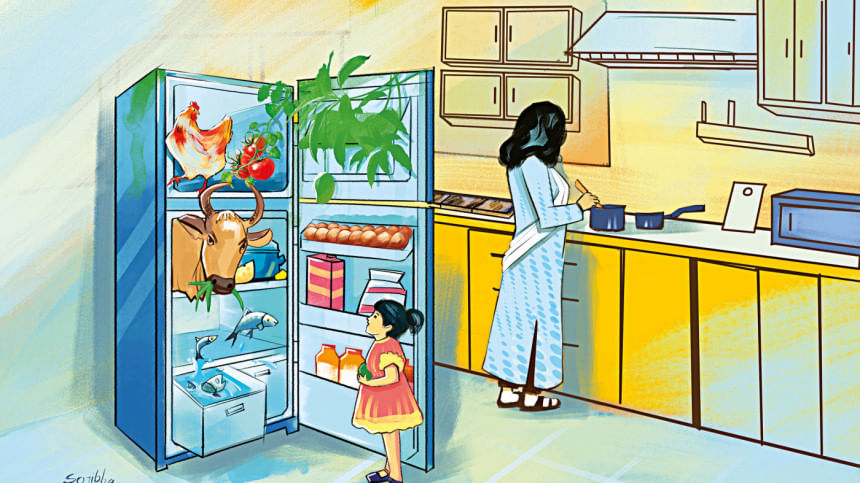Healthy and effective food preservation in the refrigerator

Understanding Your Fridge's Layout
The first step to effective refrigeration is understanding your fridge's layout and temperature zones. Different sections have different climates, each suitable for various types of food. For example, upper shelves maintain more consistent temperatures and are ideal for drinks, ready-to-eat foods, and herbs.
It is important to note that the door is the warmest part of the fridge and should be reserved for condiments, juices, and other items less affected by slight temperature changes. Crisper drawers are designed for fruits and vegetables and can have different humidity settings.
Proper Air Circulation
Good air circulation is vital. Try to avoid overpacking, as overcrowded shelves can block airflow, leading to uneven cooling and increased temperatures, which can affect the food's shelf life. A well-organised fridge not only ensures better air distribution but also helps you keep track of what you have, reducing the chance of overbuying and wastage.
In this regard, Salim Ullah Salim, Director of Marketing at Jamuna Electronics and Automobiles Ltd, adds, "We use food-grade virgin plastic material instead of silicone, which helps keep food fresh. Our refrigerators incorporate Nano Health Care technology to maintain a hygienic environment."

Proper Food Preparation
How you prepare your food before storing it can impact its shelf life. Saikat Azad, Category Head - TD Category at Transcom Electronics Ltd., informs, "Our models are equipped with state-of-the-art technology such as the Vacuum Sealed Compartment, Aero-care Vege Compartment, and Moisture-Guard Vegetable Compartment. Each feature is meticulously crafted to maintain optimal conditions within the fridge, ensuring your groceries remain fresh and nutritious for longer periods."
For long-term storage, blanch vegetables by briefly boiling them and then plunging them into ice water. This method kills bacteria and preserves color and texture. Moreover, portion out large quantities of food before storing. This reduces the need to open and close containers frequently, which can lead to contamination and spoilage.
Special Considerations for Fruits and Vegetables
Handling produce can be tricky due to their diverse storage needs. For example, some fruits, like apples, emit ethylene gas that speeds up ripening in nearby produce. Keep them away from ethylene-sensitive items like lettuce and carrots.
Tahasinul Haque, Chief Business Officer at Walton Refrigerator, highlights that humidity primarily affects fruits and vegetables. "We have included humidity controller sliders in some of our models on the vegetable box cover that can be adjusted based on the contents. Other models feature built-in design elements to prevent excessive moisture accumulation or the drying out of vegetables," he says.
Additionally, specially designed bags for vegetables and fruits help regulate air exposure, extending shelf life. Some items, like potatoes, onions, and tomatoes, fare better outside the fridge, as cold temperatures can change their texture and flavor.
Regular Maintenance
Keeping your refrigerator clean and functioning optimally is crucial for maintaining the freshness and safety of your food. Begin by removing all items, which allows you to clean all surfaces thoroughly and check for expired or spoiled foods.
Wipe down shelves and drawers with a mild disinfectant and promptly address spills to prevent bacteria and mold growth. Regularly inspect all food items for signs of spoilage and discard anything that is expired or unsafe to eat.
Mastering your refrigerator's use can dramatically improve how long your food lasts and how nutritious and tasty it remains. By fine-tuning your storage practices – from correct placement to cleanliness and proper food wrapping – you can turn your fridge into a tool of culinary preservation, ensuring that every time you reach for a bite, it's as fresh and healthy as possible.

 For all latest news, follow The Daily Star's Google News channel.
For all latest news, follow The Daily Star's Google News channel. 



Comments